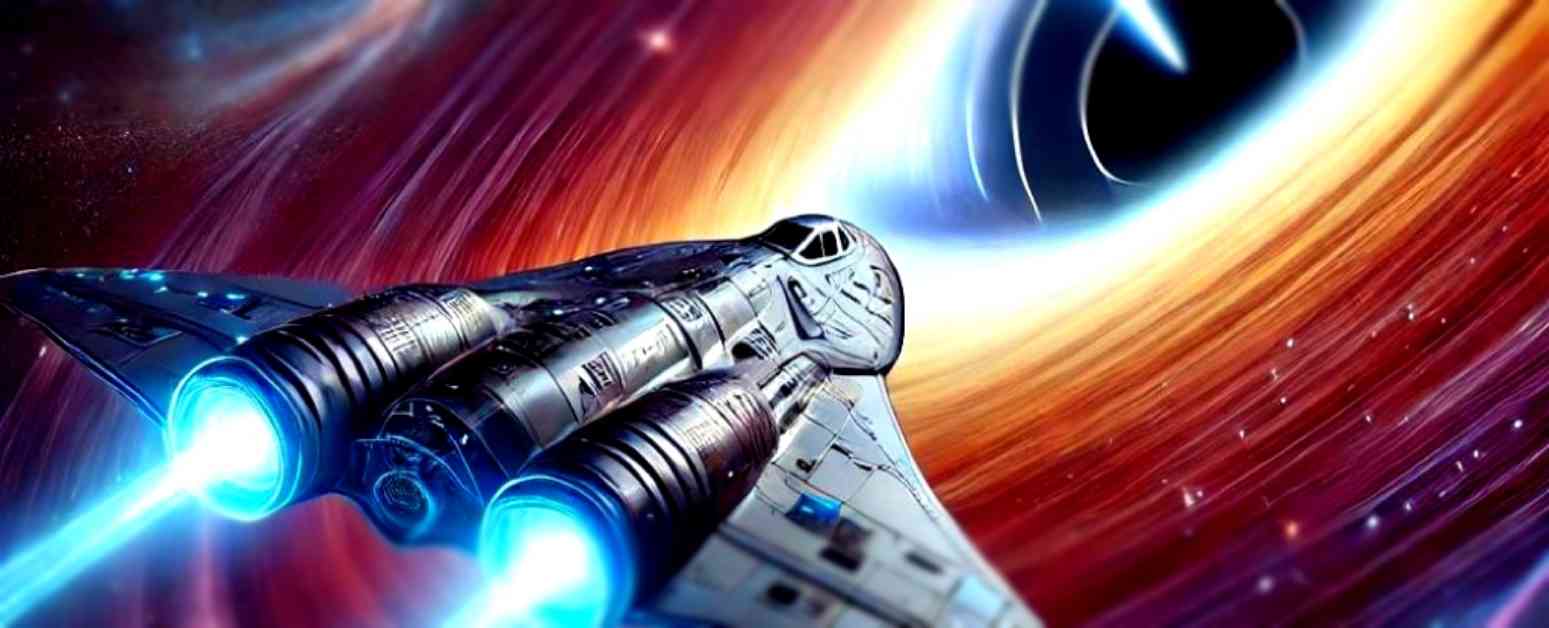Warp drives have long been a staple of science fiction, with their ability to transport spaceships at superluminal speeds through the vastness of space. While the existence of warp drives remains theoretical, researchers continue to explore the possibilities and consequences of this technology. One intriguing study looked at what would happen if a spaceship equipped with a warp drive were to collide with a black hole.
The concept of warp drives was first introduced by writer John Campbell in a science fiction novel called Islands of Space. Since then, popular culture, particularly Star Trek, has popularized the idea of warp drives as a means of faster-than-light travel. While the feasibility of warp drives in reality is still a matter of physics and engineering, the theoretical implications are fascinating.
Researchers Remo Garattini and Kirill Zatrimaylov delved into the hypothetical scenario of a warp drive spaceship encountering a black hole. Their study focused on the potential survival of the warp drive within a Schwarzschild black hole, under the condition that the ship enters the event horizon at a speed lower than that of light. The gravitational field of the black hole could potentially reduce the amount of negative energy required to sustain the warp drive, enabling the ship to pass through without being crushed.
The mathematics behind this theoretical concept also hint at the possibility of creating mini-warp drives in laboratory settings. While the creation of full-scale warp drives poses significant challenges in terms of energy requirements and exotic matter, the idea of miniaturized versions opens up new avenues for exploration and experimentation.
### What is a Warp Drive?
The concept of warp drives is rooted in the need for faster-than-light travel to navigate the immense distances of space. While the laws of physics currently prohibit objects from exceeding the speed of light, warp drives offer a potential solution by creating a bubble that allows a spaceship to travel at superluminal speeds.
In popular culture, warp drives are often depicted as powering starships through subspace, enabling them to traverse vast interstellar distances in a fraction of the time it would take at conventional speeds. The energy required to generate a warp field is immense, leading to speculation about the feasibility of sustaining such technology in reality.
Physicists like Miguel Alcubierre have proposed theoretical models for warp drives that involve manipulating spacetime to create a distortion that propels a spaceship forward. However, the challenges of generating the necessary energy and overcoming the limitations of current understanding of physics present significant hurdles to the practical realization of warp drives.
### The Role of Black Holes
Black holes are celestial objects with gravitational fields so intense that nothing, not even light, can escape their pull. These phenomena come in various sizes, from stellar-mass black holes to supermassive ones found at the centers of galaxies like our Milky Way.
In the context of warp drives, researchers focused on Schwarzschild black holes, which are simple, non-rotating black holes that serve as mathematical models for exploring the effects of gravity on objects. By studying the interaction between warp drives and black holes, scientists can gain insights into the potential consequences of such encounters.
### Navigating a Black Hole with a Warp Drive
The theoretical scenario of a spaceship equipped with a warp drive crossing into a black hole presents intriguing possibilities and challenges. Garattini and Zatrimalov’s research suggests that embedding a warp drive within the outer region of a black hole could alter the energy requirements for sustaining the warp bubble.
By carefully managing the speed and size of the warp bubble relative to the black hole, researchers theorize that it may be possible to decrease the negative energy needed to maintain the bubble. This could have implications for future experiments aimed at creating miniaturized warp drives in controlled environments.
Furthermore, the study raises questions about the impact of warp drives on the entropy of black holes. The interaction between a warp bubble and a black hole could affect the mass and entropy of the black hole, leading to potential changes in its properties.
### Future Prospects for Warp Drive Technology
While the research on warp drives and black holes offers tantalizing insights into the theoretical possibilities of faster-than-light travel, many challenges remain before such technology can become a reality. The energy requirements, exotic matter constraints, and fundamental physics principles all present significant obstacles to overcome.
Despite these challenges, the exploration of warp drives and their interactions with black holes opens up new avenues for scientific inquiry and experimentation. By delving into the complexities of spacetime physics and quantum mechanics, researchers may unlock the secrets of warp technology and its potential applications in space exploration.
As we continue to push the boundaries of our understanding of the universe, the prospect of warp drives and their implications for traversing the cosmos remains a subject of ongoing fascination and speculation. While the road to practical warp technology may be long and fraught with obstacles, the journey itself is a testament to the human spirit of curiosity and exploration.
In conclusion, the intersection of warp drives and black holes offers a glimpse into the boundless possibilities of space travel and the mysteries of the cosmos. While the challenges of creating functional warp drives persist, the theoretical groundwork laid by researchers like Garattini and Zatrimalov paves the way for future discoveries and innovations in propulsion technology. The dream of traveling faster than the speed of light may still be a distant horizon, but the journey toward that goal is a testament to the ingenuity and imagination of humanity.













